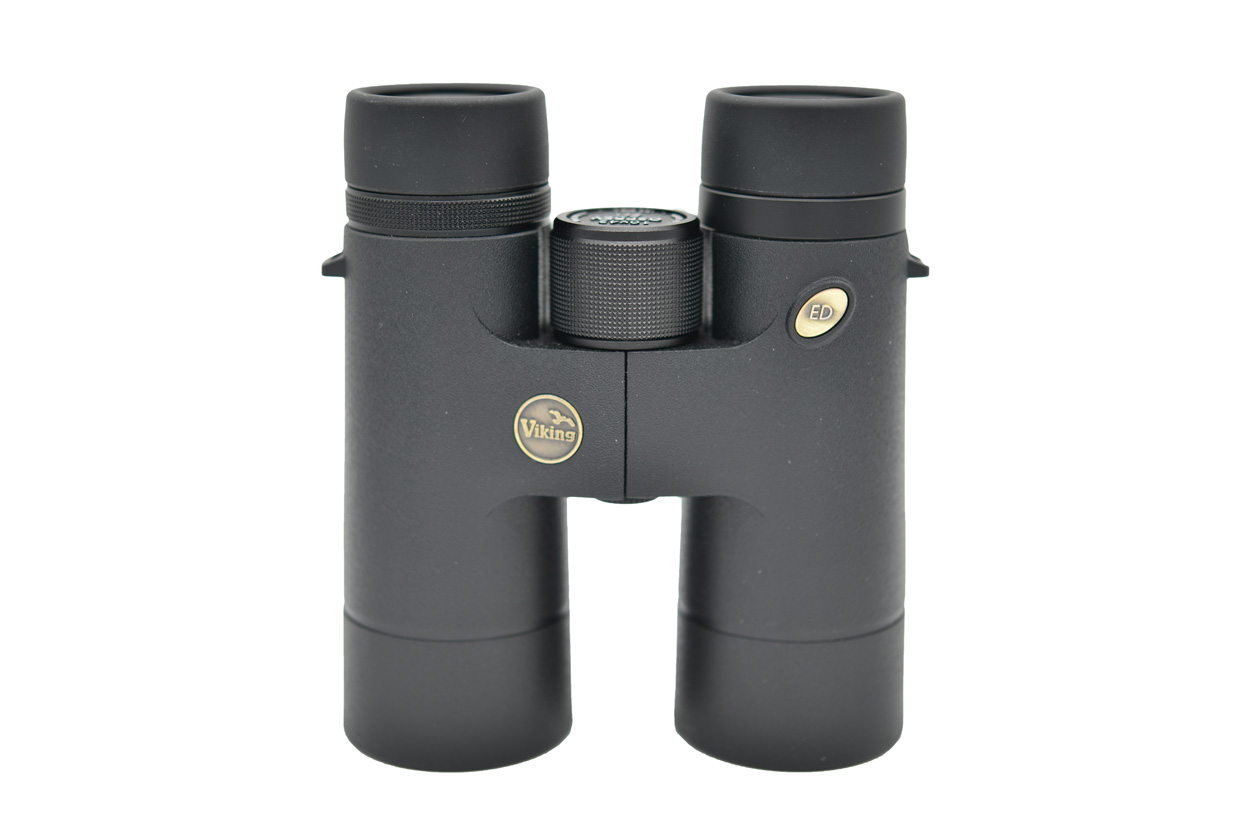Viking Osprey ED 8x42 binocular
Launched at the Global Birdfair in July, Viking has pushed the envelope and extended its range by introducing the new Osprey binocular series.
Now occupying the top-tier position above the already-successful Peregrine models, the Osprey has been designed to effectively compete with established high-quality binoculars on the market but at a lower price point. The two 42 mm models currently offer the option of 8x or 10x magnification and I chose the former to undergo field-testing.
Unlike the Peregrine, the solid rubber body armour is finely textured to increase grip as well as adding a decent amount of overall protection and a higher visual appeal. Some 30 mm back from the objectives, a narrow ring inset in the armour also adds aesthetic interest. Had it been wider and positioned further toward the end, it would also have served the purpose of accommodating the tether of the objective lens cap, increasing the chance of it remaining in place as well as tidying up the appearance of this accessory when fitted.
Departing from the traditional blue-and-white corporate colours, the Viking logo and the 'ED' epithet have been replaced by rather more elegantly embossed aluminium, taking on a 'burnished brass' effect, which gives this new model enhanced aesthetics, as well as adding a touch of class and style.

The eyecups are thinly shrouded in smooth, soft rubber and bevelled at the ends, offering physically comfortable viewing. Twisting out to click-stop at three levels, they maintain their set positions during general use but there is potential for displacement, depending on how carefully the snug-fitting, articulated rainguard is removed. I was pleased to be able to see the full field of view – a respectable 142 m at 1,000 m – in all positions excluding that of maximum extension.
As far as focusing is concerned, the dioptre, mounted on the right ocular, has a grippy textured finish and although it does not lock, it retains its setting and can be operated irrespective of the position of the eyecup above it.
Similarly textured, the central focusing wheel provides finger-width operation and turns wonderfully smoothly and easily with no resistance, bumps or hiccups. I quickly discovered it offers extremely fast focusing, rapidly moving the focused image on from 10 m to 500 m in a mere quarter of a turn, and the close focusing distance just squeezed into the manufacturer's quoted 2 m.
In common with the Peregrine, Viking has naturally integrated ED glass into this new model and with field-flattening lenses the distortion in the periphery of the field of view is negligible, the image remaining sharp virtually to the edges.
The Osprey also boasts fully multi-coated lenses, which means all air-to-glass surfaces are coated with multiple layers of anti-reflection coatings to increase light transmission, as well as improving sharpness and contrast. Internally, a dielectric-coated, phase-corrected BaK-4 prism system is also employed to further enhance performance.
This all translates to an impressive image portrayal in terms of colour fidelity, contrast and brightness. The majority of my field use took place at local wetlands where, in addition to birdlife, habitat also came under scrutiny. In these locations, the Osprey accurately reflected the pale straw colour of Phragmites reedbeds – an obligatory tick-box test for me when trialling optics as it is in this area that many low-cost models regularly 'brown up' and fail to pass muster.
Continuing the with the 'straw' theme, this binocular provided me with my best-ever local views of a pristine juvenile Western Marsh Harrier, which I enjoyed watching for a good hour. The vivid straw-cream head and tips to the upperwing coverts contrasted nicely with the otherwise dark chocolate-brown plumage, the bird brought vividly to life by the Osprey.
Inescapably, however, there is a level of chromatic aberration, although it's more apparent in the outer 30% of the image. This does not detract significantly from the overall performance, though, and there is much to like with this new model.
The Osprey is supplied with a comfortable padded lanyard, soft carry case, the aforementioned rubber objective covers and flexible articulated rainguard. A cleaning kit comprising cleaning spray, lens cloth and soft-bristled brush is also included.
Further info
- Price: £499
- Size: 145 x 130 mm
- Weight: 695 g
- Field of view: 142 m at 1,000 m
- Light transmission: n/a
- Close focus: 2 m
- Gas-filled: yes
- Waterproof: yes
- Guarantee: 10 years
Verdict
+ Excellent colour representation
+ Focusing wheel is smooth and easy to use
- Some chromatic aberration in image's outer third


